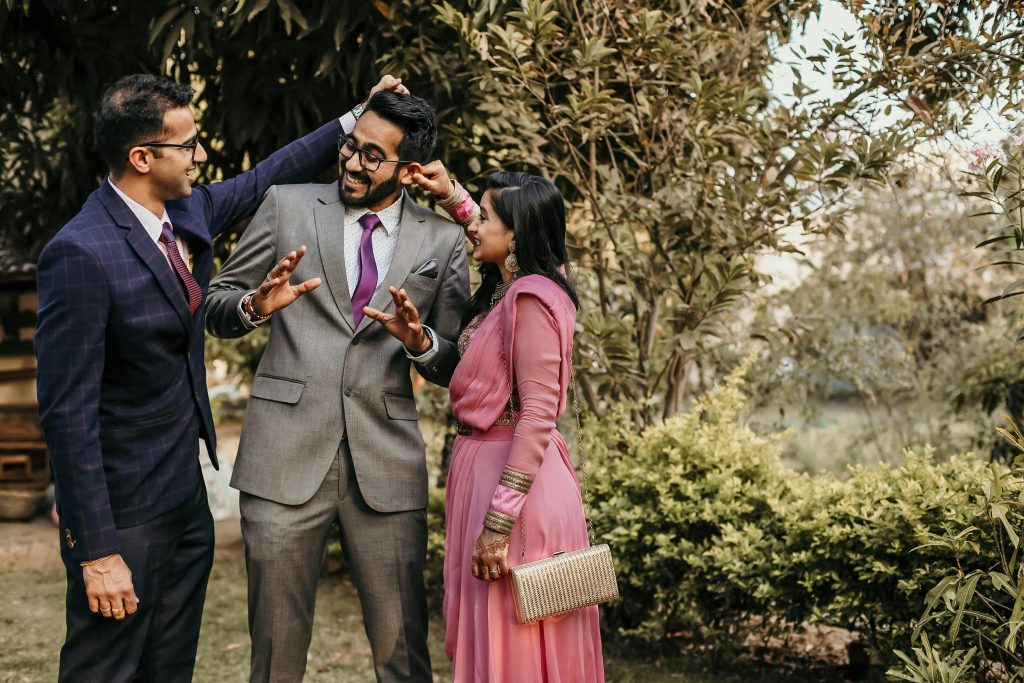Let’s say the mother of the bride is a devout Catholic and the father of the groom is a staunch atheist. Your job as the officiant is to acknowledge these differences in beliefs, and still deliver a meaningful speech that is touching and relatable for everyone involved. Accommodating these conflicting perspectives within a single ceremony can seem daunting, but with thoughtful planning and open communication, it’s more than possible to create an inclusive and touching event for everyone involved.
The key lies in focusing on what unites, rather than what divides, and in celebrating the shared values of love, respect, and commitment that go above and beyond individual doctrines.
1. Clear and Honest Communication
The first and most crucial step is for the couple to have an open and honest discussion about their own beliefs and what they envision for their ceremony. Then, extend this conversation to key family members or close friends whose beliefs might be significantly different. It’s important to understand the couple’s expectations such as what aspects of the ceremony are most important to them. Are there specific rituals, prayers, or symbolic actions they hope to see, or conversely, wish to avoid?
As the couple, it’s your job to decide what non-negotiable ceremonies, blessings, or readings you wish to include. This is your wedding ceremony, so if it’s something you feel strongly about, you should consider including it regardless of whether one or two guests might find it odd or possibly even uncomfortable. Be prepared to kindly explain that while you value their input, the ceremony is ultimately a reflection of your union.

2. Focus on Universal Themes
Most folks will agree that love, commitment, joy, and family are universal qualities. You don’t necessarily even need religious dogma to highlight these values. Use inclusive language. For instance, instead of saying, “God bless this union,” consider “May this union be blessed” or “May love and joy guide your path.”
3. Strategic Inclusion of Rituals and Readings
Consider drawing from a number of multi-religious teachings, such as reading a line from the Bible as well as a Dharmic teaching. A moment of silent reflection allows individuals to connect in their own way. In terms of rituals, a handfasting ceremony, although rooted in paganism, can be left quite open for interpretation. Similarly a handfasting, or unity candle ceremony, can also be quite inclusive. .
If all else fails, music is a universal language and can bridge almost any cultural or religious divide. Choose songs or pieces that evoke emotion and joy, rather than being exclusive to one belief system.
4. The Role of the Officiant
Your officiant sets the vibe of the ceremony. Make sure to find someone who understands your specific approach and is on your team to deliver a ceremony that is meaningful and relatable to all involved. It’s important that the officiant introduces ideas and rituals with their universal applications.
5. Prioritize the Couple’s Union
Ultimately, the ceremony is about the couple and their commitment. While accommodating guests is important, the core message should always be the love and vows being exchanged. If conflicting beliefs should arise, simply remind everyone that the focus is on the couple and their special day should be celebrated and honored in the way they desire.
Accommodating conflicting beliefs isn’t about watering down the ceremony. On the contrary, it can enrich the ceremony by including ideas that resonate with everyone who is present to witness the power of love. The goal is to craft a wedding ceremony that feels authentic to you and creates a joyful memory for everyone in attendance. After all, doesn’t love bridge all divides?
-Bernard Paul